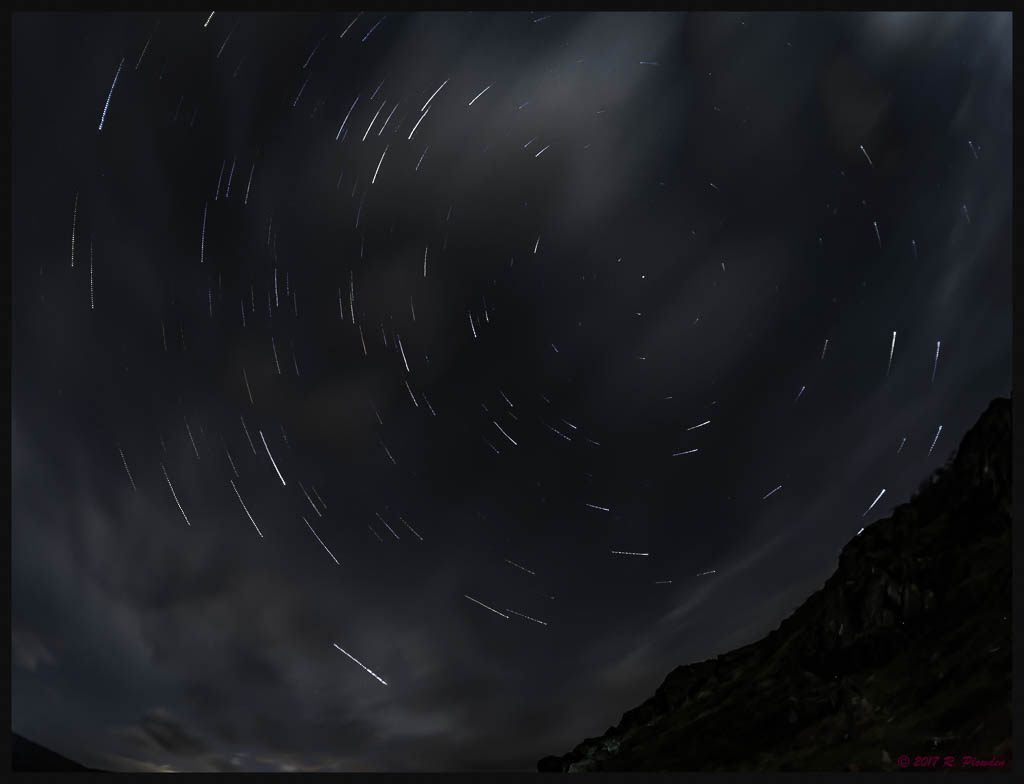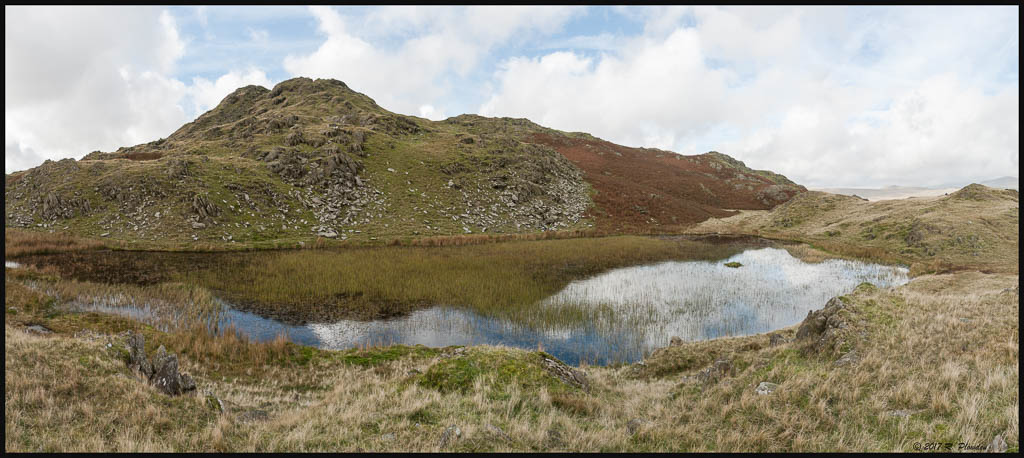| Joined: | Mon Apr 2nd, 2012 |
| Location: | South Lakeland, UK |
| Posts: | 4064 |
| Status: |
Offline
|
After negotiating branch strewn roads with quite deep flooding. I arrived about midnight, very strong winds and soggy underfoot. I waited a while to see if the clouds would shift, eventually they seemed to thin somewhat so I set the camera up where I thought it would be relatively sheltered. The landscape is extremely craggy, I wanted to include some of the craggy features in the picture, I had already had a shufty on my previous visits in daylight so I had a good idea where I wanted to set up. If I had somebody with me I would have been more adventurous but no wish to be up there on my own if I got stuck.
Mindful of the banding issue from my last star-trail session of the lighthouse, I decided to set the camera to one minute intervals and initially a 25second exposure, for my second batch I increased the exposure to 30 seconds. That meant the sensor had 28 seconds to cool between exposures (a 30 second exposure is actually 32 seconds).
There was no sign of banding last night so next time I may reduce the interval to 50 seconds. For star trails the interval needs to be kept as short as possible else the stars trails appear as a series of dots rather than a continuous line.
By 3am the clouds started to return so I packed up and came home. I loaded the images into Lightroom and made one somewhat crappy star-trail image. Refreshed this morning I reprocessed the images, the second batch were best so I made this:
D3, Nikkor 16mm f2.8 Fisheye lens, 30 seconds at f3, ISO 500.

The original reason for visiting Stickle Pike was to make 360º panoramas. I have tons of material but am struggling to assemble a satisfactorily aligned image. The PTGui software seems to take the vertical centre of the main images and place them around the 'equator' of the panorama leaving a great gaping hole at the top.
My intention when I made the exposures was that the main images overlapped at the top and I took a nadir image for the bottom. I didn't use a tripod, just hand held because the subject was so far away the parallax error is negligible. So I simple took one more exposure of where I had been standing.
This seems to be another problem, PTGui stitching software takes exception to mixing portraits and landscape images in one panorama. Even for the nadir.
The camera seems to insist on classifying an exposure pointing downwards as landscape orientation. From what I have read, rotating the image in Lightroom won't fool PTGui because it somehow knows (thinks?) it was originally taken in landscape orientation.
I have created many matching control points and the software confirms the control points are satisfactory. I am beginning to get to the exasperated stage! I plan to approach the PTGui forum for assistance because I am sure there are just some silly points I am missing. It's frustrating because I know I have some good material. The main issue is the image for the nadir. I have had some success relocating the main images to meet at the top as intended.
Here is another image, to the small tarn, Stickle Tarn and the summit of Stickle Pike in the background. This is a panorama about six portrait exposures. Looking at it now it's missing one more image to the left, it looks a bit truncated...
D3, 24-120mm f4 @24mm 1/800sec at f7.1, ISO 400

____________________
Robert.